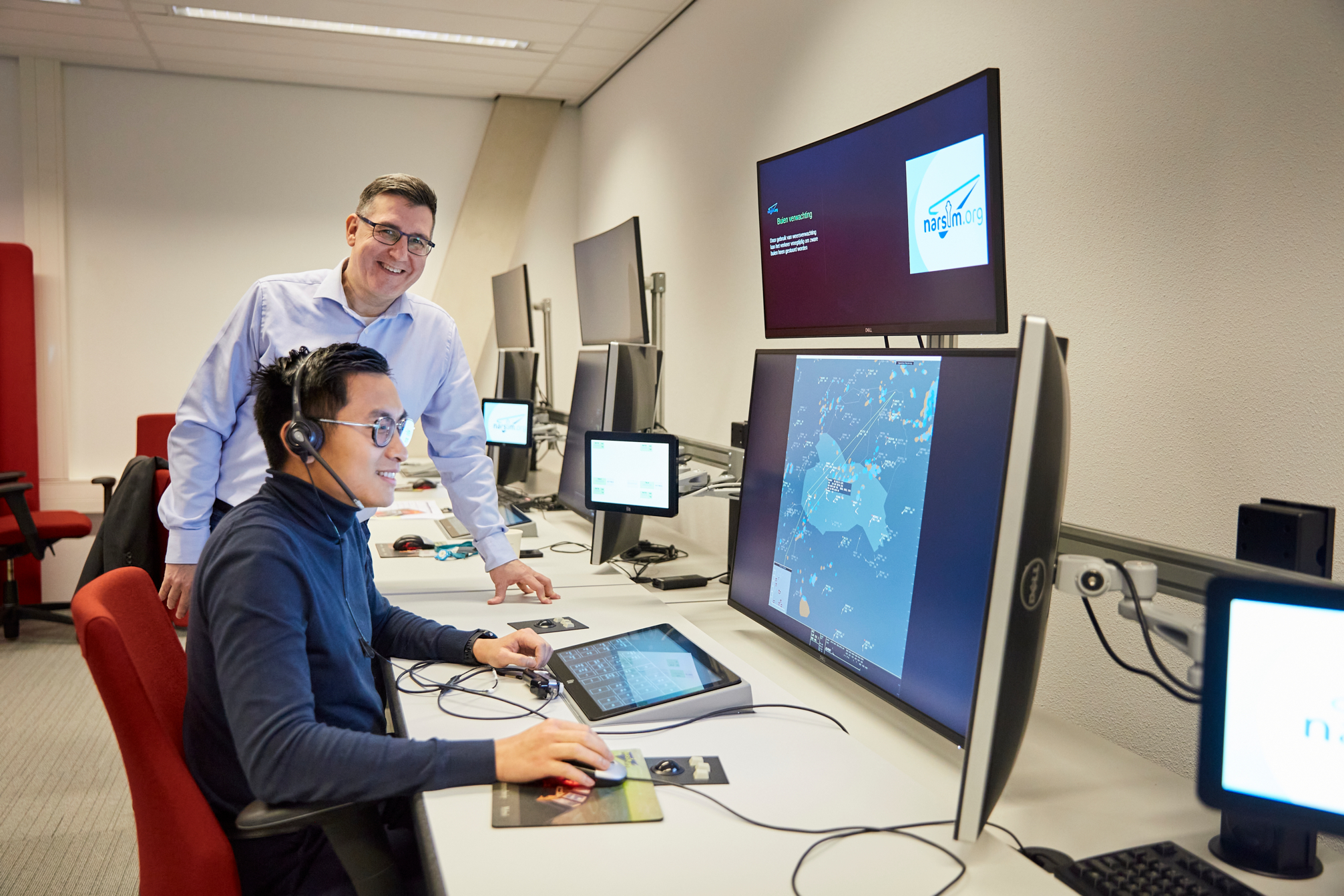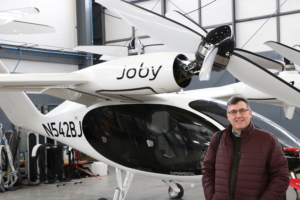In the series ‘NLR People’, we show you who the experts at the Royal Netherlands Aerospace Centre are, what drives them, and what they are working on behind the scenes. In this episode: Jürgen Teutsch, senior R&D engineer at the Air Traffic Management and Airport department.
How a physicist helps organise our ever-busier airspace
There are going to be major changes in the airspace over the coming years. It is getting busier and busier up there and more and more different types of traffic are encountering each other. The big question is therefore how to keep all those different traffic flows – drones and aircraft, manned and unmanned, fast and slow – apart safely.
“We want to organise the airspace as flexibly as possible for various users,” says Jürgen Teutsch, a senior R&D engineer at the Air Traffic Management and Airport department of the Netherlands Aerospace Centre (NLR). That department is involved in air traffic control and the organisational structure of airspace.
Organising the lower reaches of the airspace currently uses ‘visual flight rules’ which – simply put – mean that pilots try to maintain a distance from any other craft that they see. When the airspace gets busier and more flight movements by a wide variety of craft are happening in it, that is no longer enough. So there’s work to be done.
‘We’re moving towards new forms of airborne traffic’
One example the researcher gives is urban air mobility. As well as drones, that also covers manned electric vertical take-off and landing (eVTOL) craft – an electric helicopter used as an air taxi, for instance. That may sound pretty fanciful, but several companies in the United States are on the verge of scaling up production of such vehicles. “These companies all have a vision that involves certifying their air taxis, scaling up production and adapting to new regulations. Once there are a hundred vehicles like these flying in New York, it won’t take long for the airspace to get crowded. In the Netherlands too, we’re moving towards new forms of airborne traffic, which means that the airspace will be more crowded. So we’ve got to think carefully about how it’s going to be organised.”
Jürgen’s work focuses on validating concepts for using new technology and new systems in a variety of environments. “Take integrating drones, for instance, that have to be integrated from a long way away into the arrival flows of a regional airport. We can test and validate this concept in a highly realistic simulated environment.”
“We’re using technology to make the invisible visible.”
A fascination with the unknown
Jürgen’s fascination with aviation goes back to the early seventies when a spacecraft was put into orbit around Mars for the first time. Jürgen had just learned to read and he devoured every scrap of information he could find about it. That fascination never waned.
After his master’s in Space Technology and Mechanical Engineering, he started work as a researcher at Delft University of Technology’s faculty of Aerospace Technology. After a couple of detours, he ended up with Airbus as a systems administrator. It didn’t take him long to decide that he needed to go back into research. When he saw an advert for NLR in passing, he picked up the phone straight away. His enthusiasm was reciprocated and Jürgen moved permanently from his country of birth to the Netherlands in 2000.
Making the invisible visible
Close on twenty-five years later, Jürgen is still working at NLR. Another important part of his research, in addition to how to organise airspace, is improving the working conditions for air traffic controllers through new technology. A key role in this is played inter alia by augmented reality.
“Suppose you’re an air traffic controller and you’re on the tower work floor. You have to split your attention between what’s happening at the airport and the digital information that’s arriving. It would then be very efficient if you could use a HoloLens [augmented reality headset, ed.] to see extra information or even projected camera images while you’re looking outside. The headset can also let an air traffic controller see images of places that aren’t easily visible from the tower. We’re using technology to make the invisible visible.”
Jürgen also helped develop a tool for go-around detection. That’s aviation jargon: a go-around situation is what happens when a pilot is unable to land, for instance because the landing runway isn’t clear or because of high side winds. In the ideal situation, the pilot reports this immediately to air traffic control, but that is often not the case in practice – after all, it is an urgent and often stressful situation. “In a go-around, it’s easy for an aircraft to end up on the flight path of a departing aircraft. That can lead to extremely dangerous situations, or at the very least lead to a lot of delays,” he explains.
Netherlands Air Traffic Control (LVNL) asked NLR to develop a tool that automatically alerts air traffic controllers about a go-around situation. Together with two colleagues, Jürgen wrote an algorithm that compares the nominal approach path against the positions that are actually reported. If the two differ in certain characteristic ways, there is good reason to assume that the aircraft is about to carry out a go-around procedure. In that case, the air traffic controller is alerted immediately. Schiphol started using the tool in 2016.
Air traffic control in … space
In addition to his work on organising airspace properly, Jürgen’s work at NLR also covers developing analogous strategies for space flight. The zone between 18 kilometres (where air traffic control’s responsibilities stop) and 100 kilometres above the Earth’s surface (where space is deemed to begin) is getting busier and busier too. “The differences in speed in air traffic here are enormous. Weather balloons move very slowly, for instance, whereas hypersonic flight is hugely fast. There is little or no control in that zone at the moment but the ever-increasing numbers of flight movements there mean that this will have to change. We’re also thinking about how we can arrange the transition from the airspace that is controlled currently to these higher regions.”
For this particular researcher, taking part in this project closes the loop nicely. He will be able to be involved on a daily basis with aspects of space flight – something that he was only able to fantasise about as a four-year-old boy. “Nobody knows yet how we’re going to have to organise airspace and space flight in five or ten years’ time. It’s all unexplored territory – nobody has a manual that says how we ought to do it. To me, that’s a fantastic challenge.”
—
More inspiring NLR People stories: NLR People

